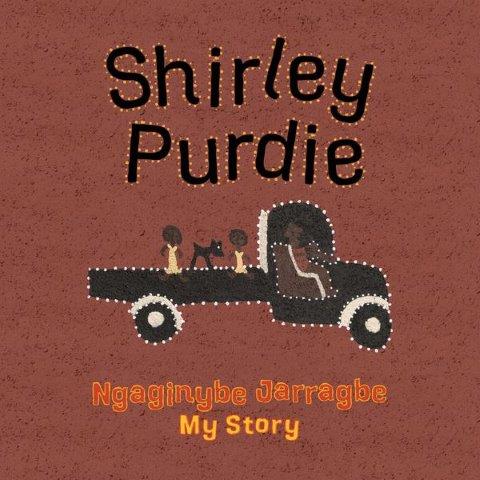Shirley Purdie is a world-famous Aboriginal artist. This is her story, quietly told and acutely observed. Born on Mabel Downs Station at Gilban, Western Australia in East Kimberley, Shirley talks about her everyday experiences of growing up with her family. There are many insights into her personal life and Aboriginal customs. For example, there are descriptions of removing kangaroo ticks, making soapy lather from freshwater mangroves, catching fish and finding bush honey (sugarbag). She describes her life as an older child as one with long days working as a ‘maid’ on the Mabel Downs Station – starting at dawn and not finishing work until nightfall.
The book’s design and layout is captivating with its dark ochre colours, for which the artist is known. Each double page offers one page in dark ochre and opposite is the text in a contrasting dark colour. These capture daily routines and events described in the text such as, ‘My mother shows me how to find bush tucker. When the time is right, this tree is yellow with flowers.’
Shirley Purdie comments about her work: ‘It’s good to learn from old people. They keep saying when you paint you can remember that Country, just like to take a photo, but there’s the Ngarranggarni (Dreaming) and everything. Good to put it in a painting, your Country, so kids can know and understand. When the old people die, young people can read the stories from the paintings. They can learn from the paintings and maybe they want to start painting too.’
Additional material in the book includes information about Shirley Purdie, an exhibition featuring her personal history, information about the Warmun Art Centre and the publisher’s note about the Kimberley Art series, of which this book is the first.
Shirley Purdie was born on Mabel Downs Station. She is a Warmun artist, elder and leader in the Warmun community. She was inspired by more senior Warmun artists including her late mother, well-known artist, Madigan Thomas and others. Much of her work explores spirituality and the relationship between Gija conceptions of Ngarranggarni (Dreaming) and Catholicism. (Magabala Books website).
Series: Kimberley Art Centre, no 1

